Ditapis dengan
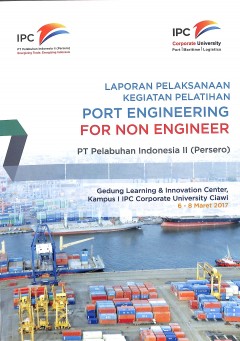
Laporan pelaksanaan kegiatan pelatihan port engineering for non engineer PT p…
- Edisi
- 2017
- ISBN/ISSN
- -
- Deskripsi Fisik
- 19 p.
- Judul Seri
- -
- No. Panggil
- IPC REP 2017 POR p C.1
- Edisi
- 2017
- ISBN/ISSN
- -
- Deskripsi Fisik
- 19 p.
- Judul Seri
- -
- No. Panggil
- IPC REP 2017 POR p C.1

Solusi membangun toko online
- Edisi
- 2008
- ISBN/ISSN
- -
- Deskripsi Fisik
- 125 p.
- Judul Seri
- -
- No. Panggil
- TXT GEN EFI s C.1
- Edisi
- 2008
- ISBN/ISSN
- -
- Deskripsi Fisik
- 125 p.
- Judul Seri
- -
- No. Panggil
- TXT GEN EFI s C.1

Modul port customer relation management 18 desember 2017
- Edisi
- 2017
- ISBN/ISSN
- -
- Deskripsi Fisik
- 1 eksemplar buku
- Judul Seri
- -
- No. Panggil
- IPC GUI MOD p C.1
- Edisi
- 2017
- ISBN/ISSN
- -
- Deskripsi Fisik
- 1 eksemplar buku
- Judul Seri
- -
- No. Panggil
- IPC GUI MOD p C.1

Knowledge capture to inform sustainable maritime operations
Purpose - The purpose of this paper is to report an explicit taxonomy of maritime operations (MO) to guide Harbour Masters (HM)s of smaller ports in planning more sustainable operations. Design/methodology/approach – This research presents strategies for building theory to promote more sustainable port management in a two-stage research design. Starting from a base taxonomy in research stag…
- Edisi
- International Journal of Operations & Production M
- ISBN/ISSN
- -
- Deskripsi Fisik
- 25 halaman
- Judul Seri
- Knowledge capture to inform sustainable maritime operations
- No. Panggil
- ATC PO AND a
Indonesia Integrated port network
- Edisi
- -
- ISBN/ISSN
- -
- Deskripsi Fisik
- 32 page
- Judul Seri
- -
- No. Panggil
- PPT PO ELV i
- Edisi
- -
- ISBN/ISSN
- -
- Deskripsi Fisik
- 32 page
- Judul Seri
- -
- No. Panggil
- PPT PO ELV i

Views Of Logistics Service Providers On Modularity In Logistics Services
The objective of this paper is to increase understanding of the concept of service modularity and to present examples of applications of modularity approach in logistics services. This aim is pursued with an empirical case study, consisting of interviews of 25 logistics service providers (LSPs). Themes found in the literature are used in the interviews and in the analysis of the interviews. The…
- Edisi
- Vol. 16, No. 1, 34–50,
- ISBN/ISSN
- 1469-848X
- Deskripsi Fisik
- 18 p.
- Judul Seri
- International Journal of Logistics Research and Applications
- No. Panggil
- ATC LO RAJ v C.1

A two-stage supply chain DEA model for measuring container-terminal efficiency
Despite the growing amount of research into container-port operations and efficiency, much of the literature on the subject treats container ports and terminals as black box systems without examining the structure of their transformation and production processes. Research on the network and multi-stage structure of container-terminal operating systems is scarce and its applications in the conte…
- Edisi
- Vol. 3, No. 1, 2011
- ISBN/ISSN
- -
- Deskripsi Fisik
- 1 p.
- Judul Seri
- Int. J. Shipping and Transport Logistics
- No. Panggil
- ATC LO BIC a c.1

Driving result through social networks : how top organizations leverage netwo…
Most leaders are desperately seeking ways to get greater results from their organizations. While they are quick to acknowledge the value and power of informal networks for getting work done, far too often leaders apply flawed approaches to generating business results from networks. What they need is a proven method for assessing and managing networks for strategic purposes. Driving Results Thr…
- Edisi
- -
- ISBN/ISSN
- 978-0-470-39249-2
- Deskripsi Fisik
- xxi, 217 p., 24 cm
- Judul Seri
- Business and Management Series
- No. Panggil
- LC 658.044 CRO d
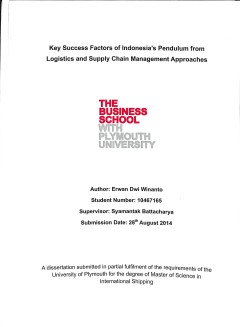
Key Success Factors of Indonesia Pendulum from Logistics and Supply Chain Man…
The Indonesia's economic growth has developed in line with world economic growth. This has brought increasing in Indonesia's inter islands seaborne trade. In the purpose to connecting Indonesia's regions (Sumatera, Jawa, Kalimantan, Sulawesi, and rest of the eastern region), the Indonesia's government brought the concept of Indonesia' Pendulum/Pendulum�…
- Edisi
- -
- ISBN/ISSN
- -
- Deskripsi Fisik
- 90 p., : illus : table : 30 cm
- Judul Seri
- -
- No. Panggil
- TD MG WIN k

Entrepreneurial experience and access to critical resources: a learning persp…
Previous studies demonstrate that novice entrepreneurs access fewer resources than experienced portfolio entrepreneurs. From an entrepreneurial learning perspective, the purpose of this paper is to investigate why they differ in terms of accessing critical resources.
- Edisi
- Vol. 11 No. 1, 2016 pp. 89-107
- ISBN/ISSN
- 1746-5265
- Deskripsi Fisik
- 21 p.
- Judul Seri
- Baltic Journal of Management
- No. Panggil
- ATC MR AAR e

U.S. import/export container flow modeling and disruption analysis
International containerized freight movement is a vital part of the supply chain for many companies, anda critical element of moving consumer goods to points of retail sale within the U.S. Containerized imports also present a clear security concern (e.g., terrorists attempting to ship “dirty bombs,” chemical, biological or even nuclear weapons, into the U.S. in a shipping container). The go…
- Edisi
- 32 (2011) 3e14
- ISBN/ISSN
- 0739-8859
- Deskripsi Fisik
- 12 p.
- Judul Seri
- Research in Transportation Economics
- No. Panggil
- ATC LO JON u

The modelling of factors determining the goods and traffic flows movement in …
The purpose of this atticle is to model the factors determining the goods traffic along the logistical channels located in various geopolitical regions on the basis of the transport network. The attention is focused on theoretical presumption of logistical channels formation in a logistical system. In this modeling the factors which determine the formation of the goods flow along the subsystems…
- Edisi
- 2003, Vol XVIII. No 1, 18-22
- ISBN/ISSN
- 1648-3480
- Deskripsi Fisik
- 6 p.
- Judul Seri
- Transport
- No. Panggil
- ATC LO JAR t

System reliability for a multistate intermodal logistics network with time wi…
Network structures have been diffusely adopted in logistics systems, where the most critical target is completing the delivery within the promised timeframe. This paper focuses on a single commodity in a multistate intermodal logistics network (MILN) with transit stations and routes to involve three parameters: a route’s capacity, delivery time and time window. There is a carrier along each r…
- Edisi
- 2016
- ISBN/ISSN
- 1366-588X
- Deskripsi Fisik
- 14 p.
- Judul Seri
- International Journal of Production Research
- No. Panggil
- ATC LO LIN s

Optimal location and size of logistics parks in a regional logistics network …
This paper proposes a model to address the design problem of a regional logistics network. In the proposed model, the decision variables include the location and size of logistics parks. The interaction between the logistics authority and logistics users as well as the effects of economies of scale and CO2 emission taxes on the logistics network design are explicitly considered. The proposed mo…
- Edisi
- 2015
- ISBN/ISSN
- 1648-3480
- Deskripsi Fisik
- 18 p.
- Judul Seri
- Transport
- No. Panggil
- ATC LO ZHA o

On cost-efficiency of the global container shipping network
This paper presents a simple formulation in the form of a pipe network for modelling the global container-shipping network. The cost-efficiency and movement-patterns of the current container-shipping network have been investigated using heuristic methods. The model is able to reproduce the overall incomes, costs, and container movement patterns for the industry as well as for the individual shi…
- Edisi
- VOL. 32, NO. 1, 15–30
- ISBN/ISSN
- 1464–5254
- Deskripsi Fisik
- 18 p.
- Judul Seri
- Maritime Policy & Management: The flagship journal of international shipping and port research
- No. Panggil
- ATC LO SON o

Network effects in the East Asia container ports industry
This paper proposes an integrated set of 4Cs indices, namely, centrality index, competition index, congestion index and concentration index to examine network effects in the East Asia container port industry. Empirical analysis confirms that larger ports enjoy greater direct network effects related to economies of scale, whereas, smaller ports leverage on indirect network effects to widen their…
- Edisi
- VOL. 39, NO. 4, 369–386
- ISBN/ISSN
- 1464–5254
- Deskripsi Fisik
- 20 p.
- Judul Seri
- Maritime Policy & Management: The flagship journal of international shipping and port research
- No. Panggil
- ATC LO LOW n

Multicommodity network flow model for Asia's container ports
This paper seeks to develop a multi-commodity network model to analyse the flow of containers within the Asia Pacific context. The model is used to evaluate the impact of container throughput in Asia’s port by varying terminal handling charges and turnaround time. The three main regions analysed are north-east Asia, east Asia (Chinese port region) and south east Asia. Using the model, it coul…
- Edisi
- VOL. 33, NO. 4, 387–402
- ISBN/ISSN
- 1464–5254
- Deskripsi Fisik
- 18 p.
- Judul Seri
- Maritime Policy & Management: The flagship journal of international shipping and port research
- No. Panggil
- ATC LO LEE m

Element substitution algorithm for general twoterminal network reliability an…
The computation of the reliability of two-terminal networks is a classical reliability problem. For these types of problems, one is interested, from a general perspective, in obtaining the probability that two specific nodes can communicate. This paper presents a holistic algorithm for the analysis of general networks that followa two-terminal rationale. The algorithm is based on a set replacem…
- Edisi
- (2007) 39, 265–275
- ISBN/ISSN
- 1545-8830
- Deskripsi Fisik
- 12 p.
- Judul Seri
- IIE Transactions
- No. Panggil
- ATC LO GEB e

Determine the optimal carrier selection for a logistics network based on mult…
From the perspective of supply chain management, the selected carrier plays an important role in freight delivery. This article proposes a new criterion of multi-commodity reliability and optimises the carrier selection based on such a criterion for logistics networks with routes and nodes, over which multiple commodities are delivered. Carrier selection concerns the selection of exactly one ca…
- Edisi
- Vol. 44, No. 5, May 2013, 949–965
- ISBN/ISSN
- 1464–5319
- Deskripsi Fisik
- 18 p.
- Judul Seri
- International Journal of Systems Science
- No. Panggil
- ATC LO LIN y

Determinants of slow steaming and implications on service patterns
The research focuses on the impact of the shipping strategy to decrease the commercial speed of container vessels, in order to reduce the bunker costs, on current service patterns. In this regard, the study also hypothesizes potential development trends in the near future. The reduction of the commercial speed, commonly referred to as “slow steaming,” has been introduced to mitigate the neg…
- Edisi
- -
- ISBN/ISSN
- Vol. 42, No. 7, 636–
- Deskripsi Fisik
- 18 p.
- Judul Seri
- Maritime Policy & Management The flagship journal of international shipping and port research
- No. Panggil
- ATC LO FER d

Design and development of an intelligent context-aware decision support syste…
This paper describes a case study of the research and development of an intelligent context-aware decision support system (ICADSS) prototype for real-time monitoring of container terminal operations in Hong Kong. We present the system design and development of the prototype system, and discuss the experiences and lessons learned. To the best of our knowledge, this study is the first identifiab…
- Edisi
- Vol. 49, No. 12, 15 June 2011, 3501–3526
- ISBN/ISSN
- 1366–588X
- Deskripsi Fisik
- 28 p.
- Judul Seri
- International Journal of Production Research
- No. Panggil
- ATC LO NGA d

Dealing with uncertainty and volatility in the port industry network: social …
The recent proliferation of inter-firm collaborative linkages within the container port industry is progressively shaping a complex architecture of voluntary ties among terminal operators, i.e. an inter-organizational network. Within the overall industry network, some stable groups of densely interconnected firms emerge suggesting the existence of “cliques” where firms repeatedly cooperate …
- Edisi
- Vol. 41, No. 7, 615–633,
- ISBN/ISSN
- -
- Deskripsi Fisik
- 20 p.
- Judul Seri
- Dealing with uncertainty and volatility in the port industry network
- No. Panggil
- ATC LO SAT g

Competitiveness of container terminal operating companies in South Korea and …
Burgeoning container port facilities have fostered intensified competition among container terminal operating companies (CTOCs). However, despite research into their survival strategies which identified antecedents of competitiveness including hard factors such as facilities, available cargo and cargo processing ability, softer factors spanning human resource management, networks and strategic …
- Edisi
- -
- ISBN/ISSN
- -
- Deskripsi Fisik
- 15 p.
- Judul Seri
- Transportation Research Part A
- No. Panggil
- ATC LO YOO c

Competitive Positioning in International Logistics: Identifying a System of A…
Firms involved in international logistics must develop a system of service attributes that give them a way to be profitable and to satisfy customers’ needs at the same time. How customers trade-off these various attributes in forming satisfaction with competing international logistics providers has not been explored well in the literature. This study explores the ocean freight shipping sector…
- Edisi
- Vol. 20(1) 2006
- ISBN/ISSN
- -
- Deskripsi Fisik
- 16 p.
- Judul Seri
- Journal of Global Marketing
- No. Panggil
- ATC LO DUR c

Container transportation service demand simulation model for United States co…
Assessing the potential demand for container ports and related multimodal transportation is critical for several purposes, including financial feasibility analysis and the evaluation of net economic benefits and their distribution. When developed in conjunction with a geographical information system, portrelated demand analysis also provides needed input for assessment of selected environmental…
- Edisi
- 2003
- ISBN/ISSN
- -
- Deskripsi Fisik
- 22p
- Judul Seri
- Maritime Economics & Logistics,
- No. Panggil
- ATC LO LUO c

Planning and Scheduling for Maritime Container Yards Supporting and Facilitat…
This book contains six chapters that can be used on a self-contained basis as teaching cases in an undergraduate or specialist class setting on OR techniques applied to maritime container operations or for port operations. Instructors and students can look forward to an insightful presentation of the challenges facing the maritime supply chains and container port logistics service providers in …
- Edisi
- 2015
- ISBN/ISSN
- 978-3-319-17025-1
- Deskripsi Fisik
- 116P
- Judul Seri
- Planning and Scheduling for Maritime Container Yards
- No. Panggil
- TXT PO WEN p

Organizing for network synergy in logistics A case study
Synergism can be defined as the co-operative action of discrete agencies such that the total effect is greater than the sum of the effects taken independently. The concept has formed one of the key components of the various strategy formulation frameworks and has been used especially for motivating corporate growth through diversification. However, as many diversification strategies failed and …
- Edisi
- Vol. 26 No. 2, 1996, pp. 51-67.
- ISBN/ISSN
- 0960-0035
- Deskripsi Fisik
- 17P
- Judul Seri
- Organizing for network synergy in logistics
- No. Panggil
- ATC LO JUG o

Optimal shipping routes and vessel size for intermodal barge transport with e…
Despite the growing role of barge transportation in the hinterland access of major seaports in Northwestern Europe, service network design for intermodal barge transportation has received little research attention. In this paper, a decision support model for service network design in intermodal barge transportation is presented. The model determines optimal shipping routes for roundtrip service…
- Edisi
- -
- ISBN/ISSN
- 0166-3615
- Deskripsi Fisik
- 10 p.
- Judul Seri
- Computers in Industry
- No. Panggil
- ATC PO ERS o

Hybrid approaches based on SARIMA and artificial neural networks for inspecti…
In this paper, the number of goods subject to inspection at European Border Inspections Post are predicted using a hybrid two-step procedure. A hybridization methodology based on integrating the data obtained from autoregressive integrated moving averages (SARIMA) model in the artificial neural network model (ANN) to predict the number of inspections is proposed. Several hybrid approaches are c…
- Edisi
- -
- ISBN/ISSN
- 1366-5545
- Deskripsi Fisik
- 13 p.
- Judul Seri
- Transportation Research Part E
- No. Panggil
- ATC PO LAR h

Examining the Street Patterns in Izmir in the 19th Century: A network based s…
experienced a notable growth, after the devastating earthquake in 1686 and has become one of the most important ports of the Eastern Mediterranean starting from the eighteenth century. There is an extensive literature on the past social and economic life of the City of Izmir, Turkey. However, the historic spatial analysis of the city is largely neglected, similar to the most studies on Asian ci…
- Edisi
- -
- ISBN/ISSN
- 1877-0428
- Deskripsi Fisik
- 6 p.
- Judul Seri
- ScienceDirect
- No. Panggil
- ATC PO KCU e

Defining a convergence network platform framework for smart grid and intellig…
The challenges faced by electricity grids suggest smart grids will have to coordinate its operation with other important initiatives in areas such as transportation. The smart grid relies on the use of network platforms where meter readings and data can be transmitted. On the other hand, concerning transportation systems the need to achieve a reduction of road congestion and traffic accidents …
- Edisi
- -
- ISBN/ISSN
- 0360-5442
- Deskripsi Fisik
- 8 p.
- Judul Seri
- Energy
- No. Panggil
- ATC PO GON d

Automatic target recognition for naval traffic control using neural networks
Safety requirements in traffic control stress the importance of techniques devoted to automatic tracking of little crafts in harbor areas. Changeable sceneries and noise variability make hard the recognitions task of an automatic target recognition system. In this paper, a modular system based on neural networks for the quasi real time detection of moving targets in seaport radar images is prop…
- Edisi
- -
- ISBN/ISSN
- 0262-8856
- Deskripsi Fisik
- 7 p.
- Judul Seri
- -
- No. Panggil
- ATC PO LLO a
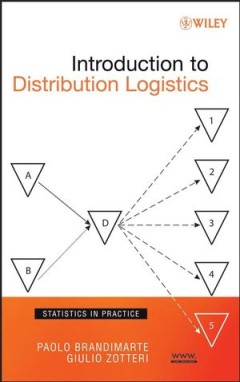
Introduction to distribution logistics
- Edisi
- -
- ISBN/ISSN
- 978-0-471-75044-4
- Deskripsi Fisik
- -
- Judul Seri
- -
- No. Panggil
- TXT LO BRA i
- Edisi
- -
- ISBN/ISSN
- 978-0-471-75044-4
- Deskripsi Fisik
- -
- Judul Seri
- -
- No. Panggil
- TXT LO BRA i
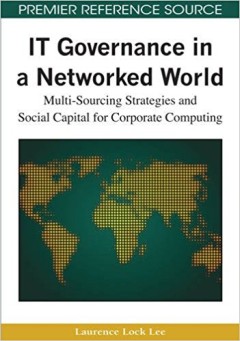
IT governance in a networked world: multi-sourcing strategies and social capi…
- Edisi
- -
- ISBN/ISSN
- 978-1-60566-085-1
- Deskripsi Fisik
- xxi, 355 p.
- Judul Seri
- -
- No. Panggil
- TXT MG LEE i
- Edisi
- -
- ISBN/ISSN
- 978-1-60566-085-1
- Deskripsi Fisik
- xxi, 355 p.
- Judul Seri
- -
- No. Panggil
- TXT MG LEE i
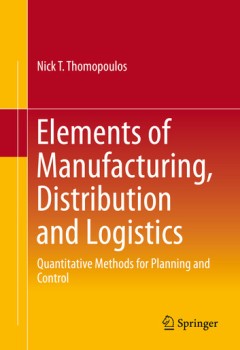
Elements of danufacturing, distribution and logistics: quantitative methods f…
- Edisi
- -
- ISBN/ISSN
- 978-3-319-26862-0
- Deskripsi Fisik
- -
- Judul Seri
- -
- No. Panggil
- TXT LO THO e
- Edisi
- -
- ISBN/ISSN
- 978-3-319-26862-0
- Deskripsi Fisik
- -
- Judul Seri
- -
- No. Panggil
- TXT LO THO e
Indonesia As a Global Maritime Axis: IPC’s contribution towards the plan
- Edisi
- 2017
- ISBN/ISSN
- -
- Deskripsi Fisik
- 26 p.
- Judul Seri
- -
- No. Panggil
- PPT PO ELV i
- Edisi
- 2017
- ISBN/ISSN
- -
- Deskripsi Fisik
- 26 p.
- Judul Seri
- -
- No. Panggil
- PPT PO ELV i
Indonesian-french seminar logistics and cold chain
- Edisi
- -
- ISBN/ISSN
- -
- Deskripsi Fisik
- 24 pages
- Judul Seri
- -
- No. Panggil
- PPT PO ELV i
- Edisi
- -
- ISBN/ISSN
- -
- Deskripsi Fisik
- 24 pages
- Judul Seri
- -
- No. Panggil
- PPT PO ELV i
Strengthening asem's regions seaport connectivity
- Edisi
- Case: Indonesia Port Bali, 27 September 2017
- ISBN/ISSN
- -
- Deskripsi Fisik
- 35 Page
- Judul Seri
- -
- No. Panggil
- PPT PO ELV s
- Edisi
- Case: Indonesia Port Bali, 27 September 2017
- ISBN/ISSN
- -
- Deskripsi Fisik
- 35 Page
- Judul Seri
- -
- No. Panggil
- PPT PO ELV s

Distribution network design: a literature review and a research agenda
The purpose of this paper is threefold. First, it classifies research on distribution network design (DND) according to the methodologies adopted and themes tackled. Second, it discusses the main implications for practitioners. Finally, it proposes a few promising directions for future research.
- Edisi
- Vol. 45 No. 5, 2015
- ISBN/ISSN
- -
- Deskripsi Fisik
- 28 p .
- Judul Seri
- International Journal of Physical Distribution & Logistics Management
- No. Panggil
- ATC LO PER d

Supply chain risk management: a new methodology for a systematic literature r…
Supply chain risk management (SCRM) has recently gained increasing attention in the supply chain context, both from the practitioners’ perspective and as a research area. Given the relevance of the topic, the aim of the present paper is to present a focused literature review, investigating the process of knowledge creation, transfer and development from a dynamic perspective within the contex…
- Edisi
- Volume 17 · Number 4 · 2012 · 403–418
- ISBN/ISSN
- -
- Deskripsi Fisik
- 19 p.
- Judul Seri
- Supply Chain Management: An International Journal
- No. Panggil
- ATC LO STR c

Across the waves : a bibliometric analysis of container shipping research sin…
The paper investigates collaborative and semantic patterns that emerged between 1967 and 2013 about the theme of container shipping based on a corpus of 294 articles published in scholarly journals within the fields of transportation, supply chain, economics, geography, regional planning and development, and operations research. An analysis based on the cooccurrence of title words allows identi…
- Edisi
- -
- ISBN/ISSN
- 1464-5254
- Deskripsi Fisik
- 19 p.
- Judul Seri
- The flagship journal of international shipping and port research
- No. Panggil
- ATC LO LAU a

Design of course-keeping controller for a ship based on backstepping and neur…
Due to the existence of uncertainties and the unknown time variant environmental disturbances for ship course nonlinear control system, the ship course adaptive neural network robust course-keeping controller is designed by combining the backstepping technique. The neural networks (NNs) are employed for the compensating of the nonlinear term of the nonlinear ship course-keeping control system. …
- Edisi
- -
- ISBN/ISSN
- -
- Deskripsi Fisik
- 8 p.
- Judul Seri
- -
- No. Panggil
- ATC MR JIA d

How should the sustainability of the location of dry ports be measured?
The global economic structure, with its decentralized production and the consequent increase in freight traffic all over the world, creates considerable problems and challenges for the freight transport sector. This situation has led shipping to become the most suitable and cheapest way to transport goods. Thus, ports are configured as nodes with critical importance in the logistics supply chai…
- Edisi
- -
- ISBN/ISSN
- -
- Deskripsi Fisik
- 9 p.
- Judul Seri
- ScienceDirect
- No. Panggil
- ATC PO NUN h

Cascading effects, network configurations and optimal transshipment volumes i…
As a consequence of the delivery of large container ships and of the drop in demand since 2008, companies are struggling with low freight rates. In addition, newly delivered container ships have been deployed on the main east–west trades, whereas medium-sized vessels have been pushed to smaller sectors through a phenomenon known as the cascading effect. This article investigates how this effe…
- Edisi
- -
- ISBN/ISSN
- 1476-0592
- Deskripsi Fisik
- 22 p.
- Judul Seri
- Maritime Economics & Logistics
- No. Panggil
- ATC PO CAR c

A stochastic seaport network retrofit management problem considering shipping…
Seaports are exposed to various uncertain disasters caused by natural or human factors, which have multi-dimensional impacts on the economy. Retrofit appears as one of the effective mitigation methods to protect the seaport network and to reduce the post-disaster loss in the port management engineering. The post-disaster loss is quantified by replacement or repair cost of the structural damage …
- Edisi
- -
- ISBN/ISSN
- -
- Deskripsi Fisik
- 175 p.
- Judul Seri
- Ocean & Coastal Management
- No. Panggil
- ATC PO PEN
Maritime networks : spatial structures and time dynamics
- Edisi
- -
- ISBN/ISSN
- 978-1-315-69285-2
- Deskripsi Fisik
- xxiv, 383 p.
- Judul Seri
- -
- No. Panggil
- TXT MR DUC m
- Edisi
- -
- ISBN/ISSN
- 978-1-315-69285-2
- Deskripsi Fisik
- xxiv, 383 p.
- Judul Seri
- -
- No. Panggil
- TXT MR DUC m

Innovation in Logistic Services and The New Business Model: A Conceptual Fram…
Service industries hold an increasingly dynamic and pivotal role in today’s knowledge-based economies. The logistics industry is a classic example of the birth and development of a vital new service-based industry, transformed from the business concept of transportation to that of serving the entire logistical needs of customers. Quantum advances in science, technology, and communication …
- Edisi
- Vol. 33 Iss 7 pp
- ISBN/ISSN
- 0960-0035
- Deskripsi Fisik
- 28 p
- Judul Seri
- International Journal of Physical Distribution & Logistics Management
- No. Panggil
- ATC LO CHA i

Dynamic programming of port position and scale in the hierarchized container …
A hierarchized container ports network, with several super hubs and many multilevel hub ports, will be established, mainly serving transshipment and carrying out most of its business in the hub-spoke mode. This paper sums up a programming model, in which the elementary statistic units, cost and expense of every phase of any shipment are the straight objects, and the minimum cost of the whole ne…
- Edisi
- VOL. 29, NO. 2
- ISBN/ISSN
- -
- Deskripsi Fisik
- 17 p.
- Judul Seri
- Maritime Policy & Management: The flagship journal of international shipping and port research
- No. Panggil
- ATC LO YAN d

Organizing for network synergy in logistics: a case study
Examines the potential of logistics network organization to deliver synergy benefits by simultaneously improving flexibility and co‐ordination. The synergy effects of the new organization range from the economies of scale and scope in production and logistics to various “spill‐over” benfits attributable to shared skills and resources in networks.
- Edisi
- Vol. 26 Issue: 2
- ISBN/ISSN
- -
- Deskripsi Fisik
- 19 p.
- Judul Seri
- International Journal of Physical Distribution & Logistics Management
- No. Panggil
- ATC LO JUG o

Analysis and forecasting of port logistics using TEI@I methodology
This paper presents an integrated forecasting model based on the TEI@I methodology for forecasting demand for port logistics services – specifically, port container throughput. The model analyzes port logistics time series data and other information in several steps. In the first step, several econometric models are built to forecast the linear segment of port logistics time series. In the se…
- Edisi
- Vol. 36, No. 8, 685–702
- ISBN/ISSN
- -
- Deskripsi Fisik
- 20 p.
- Judul Seri
- Transportation Planning and Technology
- No. Panggil
- ATC LO WAN a
 Karya Umum
Karya Umum  Filsafat
Filsafat  Agama
Agama  Ilmu-ilmu Sosial
Ilmu-ilmu Sosial  Bahasa
Bahasa  Ilmu-ilmu Murni
Ilmu-ilmu Murni  Ilmu-ilmu Terapan
Ilmu-ilmu Terapan  Kesenian, Hiburan, dan Olahraga
Kesenian, Hiburan, dan Olahraga  Kesusastraan
Kesusastraan  Geografi dan Sejarah
Geografi dan Sejarah